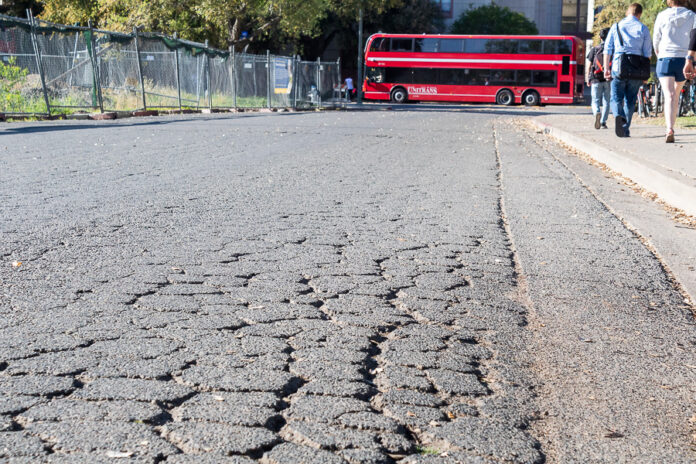In the face of America’s crumbling infrastructure, politicians should pursue a bipartisan answer
In spite of a contemporary American political atmosphere marred by increased polarization and neverending legislative gridlock, a chance at bipartisan compromise may finally be on the horizon.
According to White House deputy press secretary Judd Deere, President Donald Trump and House Speaker Nancy Pelosi agreed to meet for discussion on a bipartisan solution to addressing the country’s rapidly declining infrastructure system. Both sides seem keen on providing funding for massive structural overhaul, with the idea being a key component in Trump’s 2016 campaign and with Speaker Pelosi calling for a $1 to 2 trillion infrastructure investment last week. Trump and Pelosi’s convergence on the issue provides a rare opportunity to tackle one of the nation’s most pressing issues from a bipartisan perspective.
Critics claim that a new infrastructure package would be far too costly, especially in the midst of the country’s burgeoning debt crisis. But as things stand, taxpayers already bear the brunt of America’s crumbling transportation system. Consumers pay more for goods whose delivery must be rerouted due to the structural integrity of antiquated bridges, while traffic congestion drives up the cost of commuting and wastes workers’ time. The continued maintenance of decades-old roads and bridges comes with a hefty price tag as well. A 2017 federal estimate placed the backlog of national bridge repair at $123 billion.
In Northern California, America’s crumbling infrastructure crisis is as apparent as ever. Take a drive to any of the rural communities surrounding Davis and you are likely to find deteriorating roads and decrepit bridges — a common occurrence that is hurting citizens’ wallets. According to one 2017 California infrastructure report, driving on damaged roads costs each driver nearly $844 a year, while 5.5% of the state’s bridges are rated as structurally deficient.
Infrastructure shortcomings stretch beyond just transportation issues, with the report finding that some 678 dams are considered to possess high hazard potential. The heavy rainfall during Northern California winters makes structural damage among levees and dams especially dangerous. Just two years ago, the Oroville Dam’s main and emergency spillways were damaged after California experienced its wettest winter in nearly a century. More than 180,000 people were evacuated as a result of this crisis, and although total disaster was averted, it nonetheless served as a reminder of the risks posed by the state’s crumbling water infrastructure.
America’s deteriorating infrastructure not only costs taxpayers billions of dollars through the constant cost of maintenance and replacement, but also puts millions of innocent lives at risk. President Trump’s repeated insistence on infrastructure reform is relatively unorthodox for a Republican president, drawing the ire of more fiscally-conservative hardliners who are likely to balk at the cost of such a major proposal. Consequently, this provides the President with a chance to return the economically populist roots of his 2016 campaign (an essential move if he intends to win re-election) and gifts the Democrats with an opportunity to prove their willingness to approach bipartisan compromise on a major issue.
Additionally, a national infrastructure project would likely aid in bridging the increasingly-apparent divide among urban and rural Americans. Crumbling transit systems have deeply harmed both communities, and pursuing new measures would present a rare opportunity to address their concerns together. As such, American politicians should be willing to cross the aisle in order to fund a new infrastructure overhaul, one aimed at confronting the country’s crumbling transportation and energy power systems. Such a maneuver would not only address one of the nation’s most pressing economic issues, but also provide a glimpse at just how much work bipartisan political action can accomplish.
Written by: Brandon Jetter — brjetter@ucdavis.edu
Disclaimer: The views and opinions expressed by individual columnists belong to the columnists alone and do not necessarily indicate the views and opinions held by The California Aggie.




